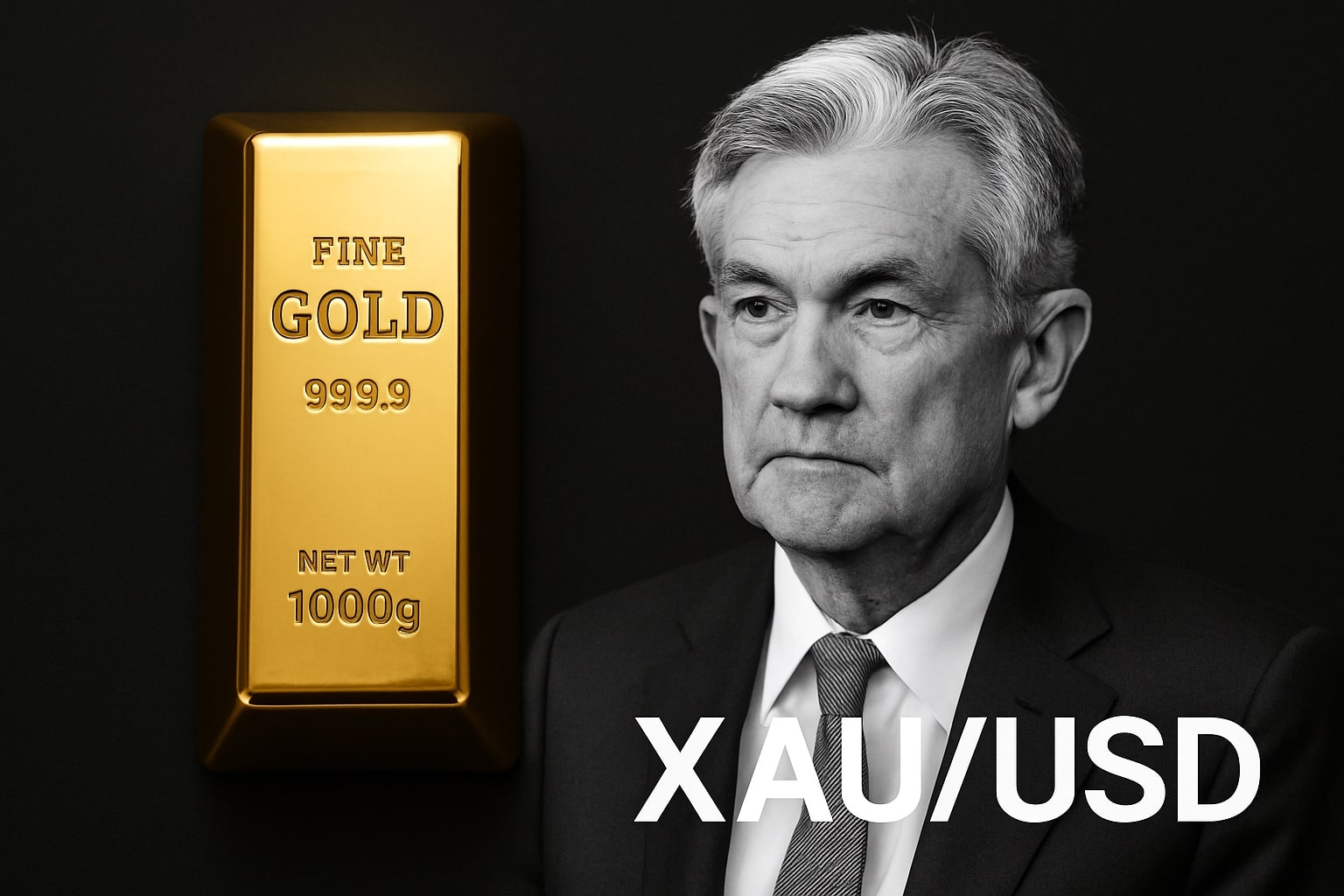
Gold Price Forecast - XAU/USD Slips Below $4,000 as Fed Cut Looms and Trump–Xi Deal Eases Tensions
XAU/USD drops 10% from its $4,381 peak to $3,927 amid profit-taking, ETF outflows, and rising risk appetite ahead of the Fed’s 25bps rate cut decision | That's TradingNEWS
Gold Price Forecast: XAU/USD Drops Below $4,000 as Markets Turn Risk-On
The gold price (XAU/USD) has fallen below the key $4,000 mark, extending a three-day decline as global investors rotate out of safe-haven assets. Spot gold was last seen trading near $3,927 per ounce, while futures fell to $3,940, marking a 10% correction from the October peak at $4,381.29. The fall follows a sharp 3% plunge on Monday — the steepest single-day drop since 2020 — as optimism over a U.S.–China trade truce reduced demand for protection assets. Despite the decline, gold remains up 42% year-to-date, highlighting how stretched bullish positions had become before the selloff.
U.S.–China Truce Removes the Tariff Premium from Gold
The biggest catalyst behind the selloff was the breakthrough framework deal struck at the ASEAN conference in Malaysia, where U.S. and Chinese negotiators agreed to remove the threat of 100% tariffs on Chinese exports and delay rare earth export restrictions. Treasury Secretary Scott Bessent confirmed that proposed tariffs were “off the table,” eliminating a core driver of geopolitical risk that had pushed gold to record highs above $4,380 earlier this month. President Donald Trump is now expected to finalize the agreement with Chinese President Xi Jinping later this week, further weakening the safe-haven bid for gold.
Federal Reserve Rate Cut in Focus
Attention has now shifted to the Federal Reserve’s two-day FOMC meeting, where markets price a 98.3% probability of a 25-basis-point rate cut, bringing the target range to 3.75%–4.00%. Typically, lower rates are supportive of gold by reducing opportunity costs, but with the decision already priced in, traders expect limited upside in the near term. The U.S. Dollar Index (DXY) remains broadly flat at 98.47, suggesting the recent decline stems more from reduced geopolitical stress than from currency strength.
Technical Breakdown: Key Levels at $3,830 and $3,270
Gold’s daily chart confirms a clear bearish reversal after failing to hold above the $4,010 support earlier this week. The next immediate support sits at the 50-day EMA near $3,830, representing roughly 3.4% downside from current levels. A deeper correction could target the $3,270–$3,440 zone, where the 200-day EMA aligns with historical highs from April to August — a region that could act as a strong reaccumulation area. A drop into this zone would represent a 17% retracement from current levels, potentially setting up long-term buying opportunities if RSI reaches oversold territory.
ETF Outflows and Institutional Selling Accelerate the Fall
Institutional profit-taking has amplified the recent correction. Last Friday recorded the largest gold ETF outflows since May, ending a ten-week streak of inflows that had lifted gold nearly $1,000 from summer levels. Analysts note this was the first weekly decline in ETF holdings since August, signaling active profit realization by funds. However, the technical structure remains intact above the $3,800–$3,900 range, indicating this may be a controlled pullback rather than a full trend reversal.
Global Equities Rally as Safe-Haven Demand Fades
Risk appetite surged across global markets, with the Dow Jones and S&P 500 both closing at record highs. Asian equities followed suit after Trump’s comments on cooperation with Japan and China regarding rare earth supply chains, which soothed fears of prolonged trade disruption. Canada’s S&P/TSX index fell 0.3% Monday due to lower materials demand, while gold miners such as Agnico Eagle Mines (NYSE:AEM) lost over 5% amid the broader commodity selloff.
Short-Term Trading Outlook for XAU/USD
Traders are watching the $3,880–$3,830 zone as a tactical buy area. Technical setups suggest a rebound could occur if prices stabilize above $3,900, with upside targets at $4,080 and $4,140. On the downside, failure to hold $3,830 could open a path toward $3,700 and eventually $3,440. The Relative Strength Index (RSI) has now returned near neutral, indicating room for further downside before oversold conditions appear.
Read More
-
Broadcom Stock Price Forecast AVGO Stock Sinks to $324 After $414 Peak – Is $390 the Next Target?
17.12.2025 · TradingNEWS ArchiveStocks
-
XRP Price Forecast: Can XRP-USD Price $1.64 Hold Before a Run Toward $2.50–$3.00?
17.12.2025 · TradingNEWS ArchiveCrypto
-
Oil Price Forecast: WTI at $56 and Brent at $60 as Trump’s Venezuela Blockade Collides With 20% Yearly Slide
17.12.2025 · TradingNEWS ArchiveCommodities
-
Stock Market Today: Dow Outperforms at 48,271 While S&P 500 and Nasdaq Slide on Oracle AI Debt Fears
17.12.2025 · TradingNEWS ArchiveMarkets
-
GBP/USD Price Forecast - Pound Under Pressure as Softer UK CPI Drags Cable Back Toward 1.33
17.12.2025 · TradingNEWS ArchiveForex
Forecasts from Major Institutions: Long-Term Bullish Bias Remains
Despite near-term weakness, major institutions remain structurally bullish on gold heading into 2026.
-
JP Morgan projects an average of $5,055/oz in Q4 2026, maintaining a long-term target of $6,000 by 2028.
-
Goldman Sachs forecasts $4,900/oz by December 2026, citing inflation hedging demand.
-
Bank of America maintains a $5,000/oz end-2026 projection, expecting renewed central bank accumulation.
-
Reuters’ median forecast among 39 analysts shows a $4,275/oz 2026 average, marking the first time annual consensus exceeds $4,000.
Analysts highlight the Fed’s pivot toward sustained easing, persistent fiscal deficits, and robust central bank buying as structural supports for gold’s long-term uptrend.
Gold’s Correlation With Silver and Broader Metals Market
Silver, often considered gold’s leveraged counterpart, also retreated sharply to $46.72/oz, down 2%, but remains up 60% year-to-date. The synchronized correction across metals suggests broad profit-taking rather than a collapse in industrial demand. Analysts expect volatility to remain elevated until the Trump–Xi summit concludes, after which attention will shift to the Fed’s December decision and updated inflation forecasts.
Final Technical Verdict: Healthy Correction in an Extended Bull Market
While XAU/USD has broken below $4,000, the broader trend remains bullish as long as the price holds above the 200-day EMA near $3,300. The recent decline likely represents a technical reset after extreme overbought conditions. Momentum indicators are cooling off, positioning the market for a potential rebound in November once the rate decision is absorbed.
Verdict: Hold/Buy on dips.
A drop into the $3,830–$3,440 range could present strategic accumulation opportunities ahead of the next inflation cycle and further Fed easing. The long-term structural case for gold remains intact, supported by macroeconomic uncertainty, currency debasement fears, and continued central bank diversification.



















